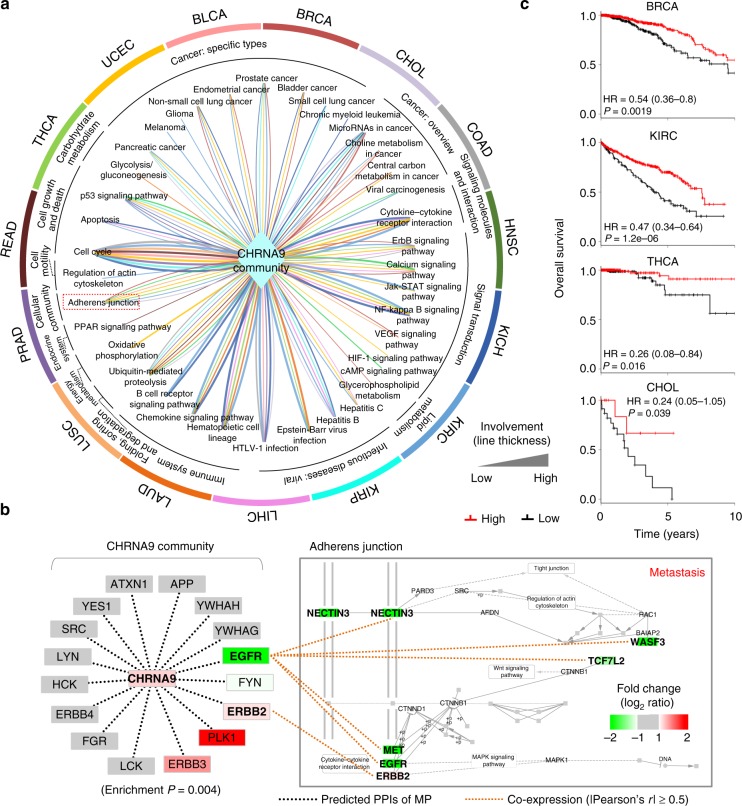Fig. 5.
Nicotinic acetylcholine receptor subunit α9 (CHRNA9) community-regulated networks in cancers. a CHRNA9 cancer membrane protein-regulated networks (CaMPNets) containing 38 cancer-related pathways in 15 cancer types. CHRNA9 and its interacting proteins (i.e., CHRNA9 community) are depicted as a rhombus. These 38 pathways are grouped and labeled according to their Kyoto Encyclopedia of Genes and Genomes categories surrounding the pathway outlines. The colored outlines surrounding the CaMPNets indicate that certain pathways are regulated by the CHRNA9 community in specific cancer types. The thickness of the lines is proportional to the significance of involvement (−log10 enrichment P). For example, the CHRNA9 community apparently involves the cell cycle, which is relevant to cell growth and death in most cancers, and participates in adherens junction and vascular endothelial growth factor signaling pathways, which are related to cell adhesion and communication, in BRCA (red) and LUSC (light orange). Source data are provided as a Source Data file. b CHRNA9 community-regulated adherens junction in BRCA. The squares with colors and bold letters represent genes in this community-regulated pathway. The black dotted lines denote predicted protein–protein interactions. The orange dotted line indicates a co-expressed gene pair (Pearson’s r ≥ 0.5 or ≤–0.5) between genes in the CHRNA9 community and adherens junction. In this pathway, upregulated (red) and downregulated (green) genes, co-expressed with genes in the community, and their interacting neighbors are labeled with gene names. c Kaplan–Meier survival plots of differences in 10-year overall survival for BRCA, KIRC, thyroid Carcinoma (THCA), and cholangiocarcinoma (CHOL) patients stratified by the combined score of genes in the CHRNA9 community-regulated adherens junction. Curve separation was assessed by log-rank test

